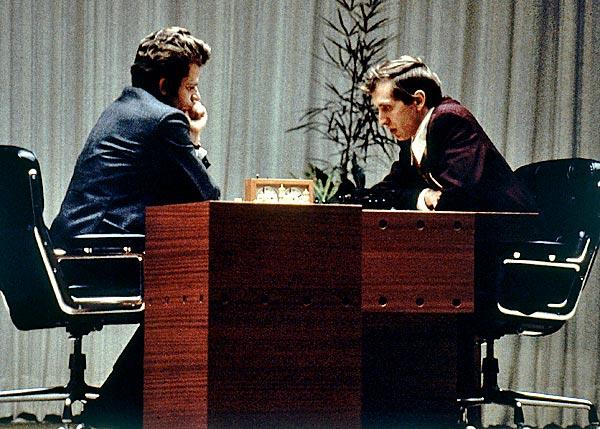
Winning from Both Sides of the Same Position
Dear chess lovers, there is a story that one time a Master was analyzing a position and Alekhine took up the opposite side. After a while, Alekhine said, "I can win from the opposite side of the original position", and proceeded to beat this Master from both sides of the position.
This blog post is about something similar that happened to David Bronstein, my favorite player of all time.
I love him because he is unabashedly human; I love him because his heart is tender. He was a great player who tied the great Botvinnik in a World Championship Match in 1951.

Many were his contributions to modern chess. He was perhaps the greatest chess innovator of the Twentieth Century.
He was the main proponent of Rapid Chess (in his time it was called Active Chess). The chess clock with increments was his idea, not Fischer's.
The great Tigran Petrosian, who won the World Championship in 1963, stated that people today think that modern chess started with the Informator, but that players of his generation knew that modern chess started with David Bronstein! I was amazed when I read this, and only recently, in a book about Petrosian, did I read the rest of that quote....Petrosian said that Bronstein had given a new interpretation to old openings!
Bronstein was born in Ukraine in 1924. He had a happy childhood in a loving Jewish family.

However, in 1937, when Bronstein was 13 years old, his father was declared an Enemy of the State and sent to the Gulag (for nine years!) for the crime of complaining about a corrupt official who was oppressing people in the villages. Can you imagine? When you need your father the most, he is violently taken away!

In these two photos you can see the difference between a happy child and a very sad teenager.
Now, to the first game, played in 1990 in Reykjavik, Iceland.
Walter Browne was US Chess Champion multiple times. He was also an expert on the Black side of the Najdorf Sicilian. A few days before this game, he gave Bronstein a copy of his chess magazine, in which he analyzed a novelty in the Najdorf. Bronstein thought he could improve on White's play, so here we go!
(Comments in both games by GM David Bronstein)
Here is the second game, played in 1995. In this game Bronstein plays Black, and improves on Browne's line!
Addendumn: Here is the Taimanov-Larsen game to which Bronstein was referring: